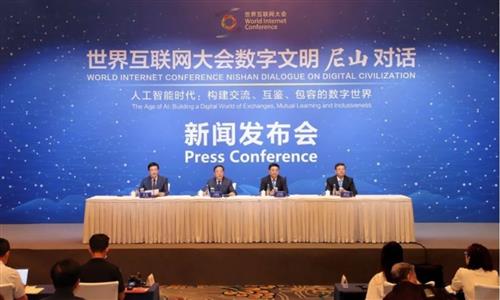World’s tallest wooden pagoda in Shanxi Province adopts ‘digital twin’ to develop tourism

A view of the Yingxian Wooden Pagoda on April 26, 2024 Photo: Li Xuanmin/GT
The Yingxian Wooden Pagoda, the world's tallest wooden pagoda also known as the Sakyamuni Pagoda of the Fogong Temple, in Yingxian County, North China's Shanxi Province, embraced its artificial intelligence (AI)-powered "digital twin" on Friday, enabling visitors to immerse themselves inside the tower - including places which the public were previously unable to access - through virtual reality (VR) glasses.
It is a latest example of how the fast-track development of AI is bringing significant changes to cultural heritage protection. Industry insiders expect the wider application of the technology to assist researchers in their studies on Chinese cultural heritage items, injecting new impetus into the country's booming cultural tourism.
"It's like travelling to the digital replicas of the Wooden Pagoda, but at a parallel time when it was built. When you 'walk through' different floors of the tower, [Chinese architect] Liang Sicheng [who discovered the building] is also delivering an introduction and speaking to you," a tour guide told a group of visitors who were queuing up at the Yingxian Wooden Pagoda's exhibition hall to experience the "digital twin."
Built in 1056 during the Liao Dynasty (916-1125), the Wooden Pagoda has a history dating back almost 1,000 years. It is now the world's oldest and tallest wooden structure, at a height of around 66 meters, equivalent to a 23-story building. As the pagoda has withstood several earthquakes and artillery attacks in history, it is now visibly tilted. To ensure its conservation, visitors since 2010 were not allowed to access higher than the second floor.
The Global Times experienced the digital replicas and found some intriguing details. For example, immediately when the tourists "advanced" to the fifth floor, they could see the entire wooden tower being transformed into transparent space with transparent bracket arches, which helps them to appreciate the complicated wooden structure inside.
"The digitalization project is a phased breakthrough thanks to the development of AI that helped solve the modeling problem. It is a long-standing issue in the protection of historical wooden tower, which has a more complex structure than other historical buildings," Liu Chang, director of the Institute of Architectural History and Cultural Relics Protection under Tsinghua University's School of Architecture, said at a panel discussion on Friday after the digital replicas were unveiled.
Creating 'digital twin'
There are several steps in creating the "digital twin," Lenovo, who provides technological support to the project, told the Global Times. The digitalization project was jointly launched by the Yingxian local government, Tsinghua University's School of Architecture and Lenovo.
The first is to collect data specific to the Wooden Pagoda using drones and cameras, then process and analyze those data through AI algorithms, and train it through deep learning and neural networks to help it understand three-dimensional spatial information.
After this step, the AI model, along with other modeling tools, constructs a digital twin that rapidly and accurately reproduces three-dimensional spatial information. Then, the model is integrated with extended reality technology to make a seamless switch between the virtual world and the reality.
During the process of project development, over 15 million polygons base materials were utilized, nearly 60,000 lines of unity programming were completed, and models were manually rendered to a size of 4.2 gigabytes, Lenovo said, reflecting AI's leading role and exemplary significance in the industry.
Mao Shijie, vice president of Lenovo and head of Lenovo Research Shanghai, told the Global Times on Friday that it took only about 10 hours to process data for the AI algorithm and then present the 3D model, compared with the traditional modeling that could take many engineers months to complete the job.
"The most pivotal role [of AI] is its information extraction and deduction capacity, which paves way for further research efforts. Though a lot of information about the wooden pagoda has been collected, some remain untapped, and this is where AI could assist us - [providing estimated] data on its original design and enhancing our understanding on its status in different time," Wang Xiaolong, deputy director of the Shanxi Institute for the Conservation of Ancient Buildings and Colored Sculpture Murals, said during a panel discussion.
"Over the past four years, the upgrade of AIGC technology is very fast, with particular advancement in improving the accuracy. And what we aim in the future is to support the process of larger amount of data with smaller hash rate, and further elevate the replication accuracy of the pagoda's details," Mao explained, referring to AI-generated content.
Industry insiders also expected the expanding data processing capacity and wider innovative application of AI to bring "unprecedented new opportunities" for the protection of cultural relics industry. For example, AI algorithms could also be used to help researchers read and interpret ancient books, and identify key manuscripts, they noted.
Cultural tourism boom
The "digital twin" project was launched just days ahead of the five-day May Day holidays which fall on May 1-5. Local officials expect that the project could draw in more tech-savvy tourists to visit the Yingxian county and fuel a further tourism boom.
"It provides an interactive experience that satisfies the public's curiosity and thirst for knowledge, ensuring the effective preservation of cultural heritage while it is being properly displayed," Mao said.
Data from various travel platforms underscored that China's tourism market will continue to maintain a strong recovery during the upcoming May Day holidays, which starts on May 1.
According to a report released by the Shanxi provincial tourism authority in April, the daily number of tourists to Shanxi during the three-day Qingming Festival, which started on April 4, surpassed the four-day New Year's holidays, which started on December 30, 2023, making it one of the hottest travel destinations in the central region of the country.
China reported about 119 million domestic tourist trips during the three-day Qingming Festival holidays, with a gross spending of 53.95 billion yuan ($7.46 billion). The two measurements have all surpassed 2019 levels.




